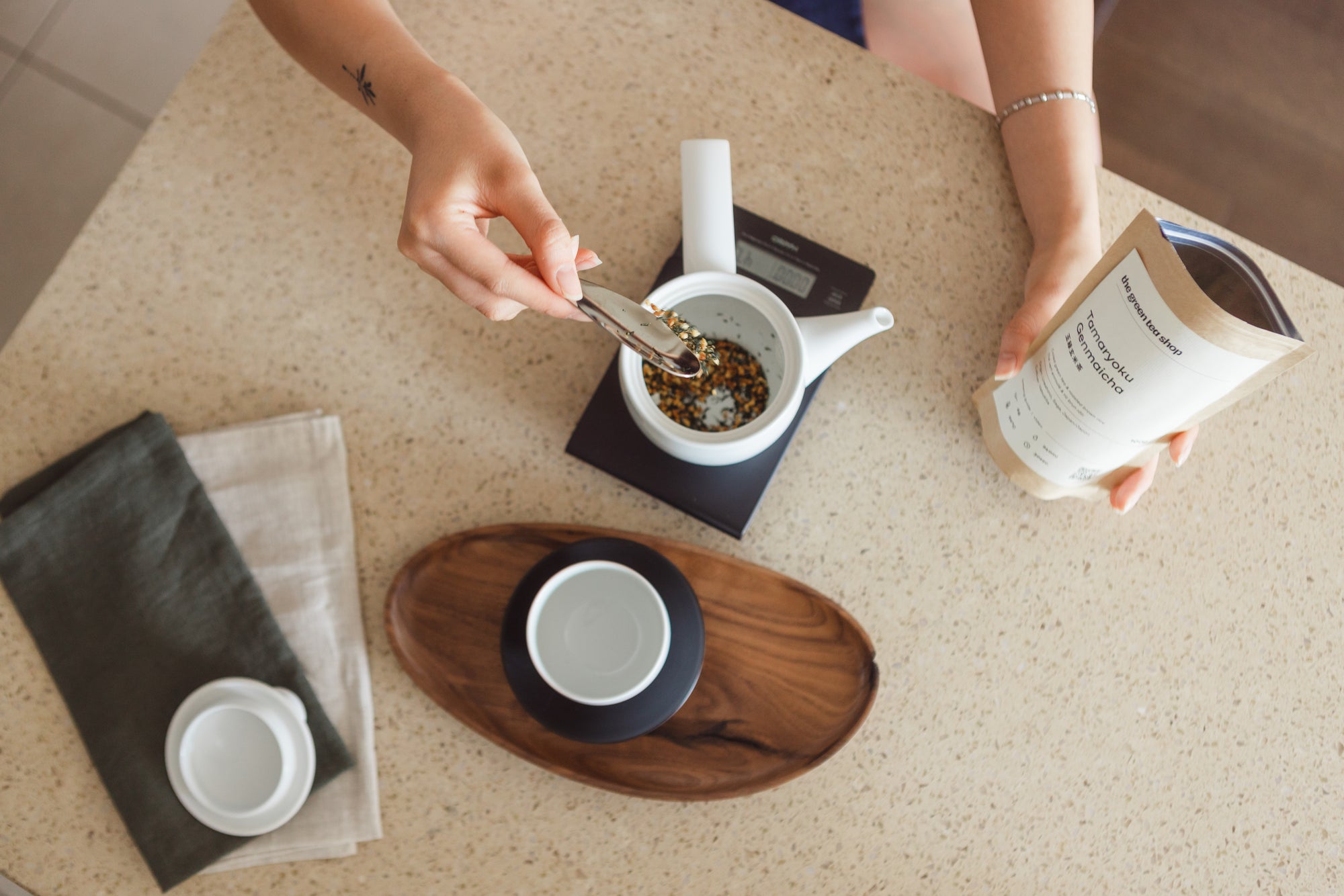The guide below is the standard method in Japan, so following these steps can help you effortlessly recreate the authentic flavours.
While this video is technically made for Kamairicha, the general rules and techniques apply to all types of Japanese green teas! All you have to do is tweak the tea/water ratio, temperature, and steep time.
What You Need
- Teapot
- Electric kettle
- Scale
- Timer
1. Weigh the tea leaves
The first step to making a perfect cup of tea is to use the right amount of tea leaves and water.
For instance, if you want 240 ml (8 oz) of tea, you will need 8 g of tea leaves.
We recommend that you start with this ratio first and then adjust according to your preference later on. As you get more experience, you'll be able to figure out your taste preferences as well as your own sweet spot.
Be sure to check the capacity of your teapot and cup of choice and adjust the quantity as necessary.
2: Boil water
There are several types of Japanese green tea that each call for different temperatures, but avoid using boiling hot water! This is because boiling hot water may extract too much of the bitter and astringent compounds.
3. Gently pour hot water & steep
Japanese green teas don't need to be steeped for very long. In fact, 60 seconds is often enough to bring out the balanced flavour.
That being said, the steep time varies according to the water temperature or the type of tea you're brewing. Generally speaking, the lower the temperature, the longer you should steep, and the hotter the temperature, the shorter you should steep.
4. Serve
Make sure to pour in the last drop, as this is the most flavourful!
Promptly remove the lid to prevent the tea leaves from getting too mushy from the heat and humidity. This simple step will make the second infusion even more delicious.
Do not swirl the teapot with the intention to 'extract more flavour.' This will actually only increase the bitterness of the tea. Keep in mind that the way you move your teapot will impact the flavour!
5. Prepare second/third brew
Did you know that Japanese green teas can be (and should be) steeped multiple times? In fact, tea connoisseurs state that the latter infusions are when you can truly appreciate the tea's characteristics!
The water temperature for the second/third infusion should be slightly higher than the first infusion. Steeping time is not required, as the tea leaves are already open. You can serve immediately after pouring water into the teapot.
